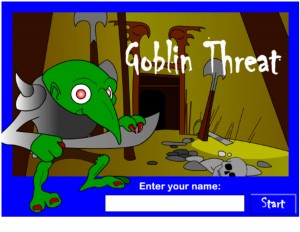Copyright Guidelines for Faculty and Students
- Individual copying is permitted for personal research as long as it is a single copy of an article from a journal or chapter from a book.
- Instructors may make or request to have made multiple copies (one per student) for their class as long as it is brief and spontaneous, and the cumulative effect is not negative.
- Copying of the materials should be for only one course and one term in the school in which copies are made.
- Not more than one short article, story, essay or poem, or two excerpts may be copied from the same author, or more than three from the same collective work or periodical volume during one class term.
- There shall not be more than nine instances of such multiple copying for one course during one class term.
- The teacher may do the copying when there is not a reasonable length of time to request and receive permission to copy.
Amount which can be copied:
- Complete article, story or essay if the piece is less than 1,000 words or 10% of the whole, whichever is less.
- One chart, graph, diagram, drawing or cartoon per book or periodical issue.
- Excerpt from a longer poem so long as it does not exceed 2,500 words.
Nature of the copying should be:
- Factual or nonfiction based.
- Important to educational objectives.
- Published work.
Copyright guidelines for Course Reserves
At the request of a faculty member, a library may copy and put on reserve excerpts from works in its collection. What can be put on reserve?
- Single articles or chapters or other small parts of a work.
- Only a small part of the required reading materials.
- Copies of materials already legally possessed by the library.
All reserves should include any copyright notice on the original and all appropriate citations and attributes to the source. Access is limited to students enrolled in the class.
For more information see The Campus Guide to Copyright
Additional Resources:
- Exceptions for Instructors in U.S. Copyright Law
- The TEACH Act and some Frequently Asked Questions
- Fair Use Evaluator
- Fair Use Pyramid
- A Fair(y) Use Tale (video)
- Copyright Decision Trail (Interactive tool to help you make informed copyright decisions)
- U.S. Copyright Law Quiz
Plagiarism
At RMUoHP, the University Handbook states the following definition of plagiarism: “Intentionally or knowingly representing the words or ideas of another as one’s own.”
“Honesty requires that any ideas or materials taken from another source for either written or oral use be fully acknowledged. The language or ideas taken from another may include but are not limited to isolated formulas, sentences, or paragraphs to entire articles copied from books, periodicals, speeches or the writings of other students. The offering of materials assembled or collected by others in the form of projects or collections without acknowledgement also is considered plagiarism. Any student who fails to give credit for ideas or materials taken from another source is guilty of plagiarism.”
Dr. Sherill Nones Cronin, PhD, RN, C, in her article, Leadership Dimension: The Problem of Plagiarism, Dimensions of Critical Care Nursing, 22 (6); 253-254, Nov/Dec 2003, offers the following Tips to Avoid Plagiarism (used with author and publisher permission):
- Use proper citation and referencing. Identify the sources of facts and ideas that are not your own.
- If you are using someone else’s exact words, indicate this with quotation marks and appropriate notation.
- If you want to include your own words that have been published in another journal for another article, first obtain permission from the publisher, then cite the article correctly.
- Do not rely on only one or two sources for an article, as this tends to promote duplication of words or ideas. Have one or more colleagues who know the subject matter review your manuscript to see if any parts of it sound similar to anything they’ve read recently.
- Only send the manuscript to one journal at a time. If your work is rejected by one journal, you are then free to submit it to another.
- When writing several articles about a single, complex research study, focus on different aspects of the study and its findings in each. Do not repeat the same findings in each.
- Know your topic well and stay current with the literature.
For more information on plagiarism, please visit these websites. These Universities have excellent, detailed definitions and examples:
- Northwestern University
- Purdue University
- Rochester Institute of Technology
- The Council of Writing Program Administrators

